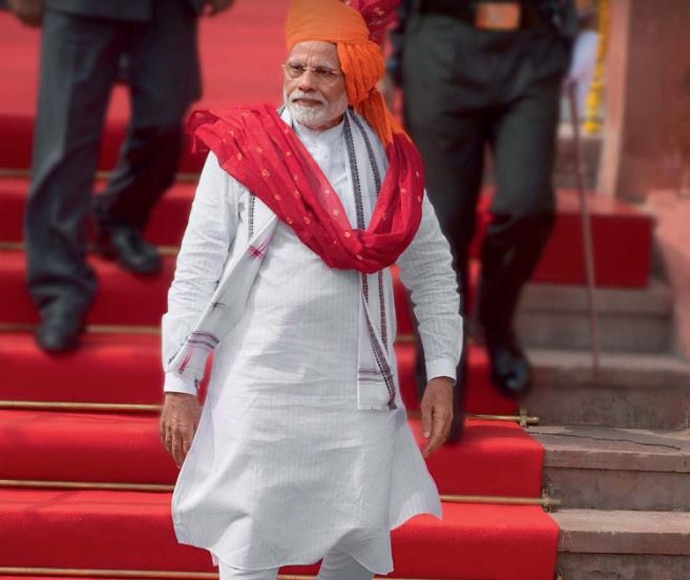Narendra Modi 18 Years And Ten Months In Power
Narendra Modi 18 years and ten months in power. Modi has not only become the longest-serving non-Congress Prime Minister in the history of India, but he has also become the person to lead the longest elected government. Modi, who has worked continuously for nearly thirteen years as the Chief Minister of Gujarat, is the Prime Minister of the country for the last quarter and six years.
In this way, he has remained at the helm of power in both places for 18 years and ten months in total. No such record is named in the history of independent India, not even the name of Jawaharlal Nehru, the first PM of the country.
On October 7, 2001, Narendra Modi was sworn in as Chief Minister at the Helipad Ground in Gandhinagar. This was his first entry into government at any level. Before becoming Chief Minister, Modi did not even contest the election of sarpanch, it is a distant thing to become MLA and MP.
It was different than through his skillful strategy and organizational skills, he had formed the BJP government in Gujarat for the second time continuously, for which he had prepared the land as the General Secretary of the organization of Gujarat BJP.
However, it was also coincidental that when Modi had to leave Gujarat after the rebellion of Shankarsinh Vaghela in 1995 and then after moving to the organization, he had reached an important post like BJP’s National Organization General Secretary, his formal return to Gujarat was that of the organization. The place was directly in the government.
The central leadership of the BJP had decided to replace Modi with the Chief Minister of Keshubhai Patel, who was first made Chief Minister in 1995 by Narendra Modi and due to which the remaining important contenders for the post of CM, Shankarsinh Vaghela, Kanshi Ram Rana or Suresh Mehta. Angry with him.
Narendra Modi 18 years and ten months in the longest elected government.
In such a situation, when Narendra Modi had to formally take over the command of the BJP government in Gujarat at the behest of then Prime Minister Atal Bihari Vajpayee and then Prime Minister LK Advani on the day of October 7, 2001, the challenges before him were serious.
In many elections held in the years 2000 and 2001, the BJP had to face severe defeat in Gujarat. The Rajkot Municipal Corporation was first occupied by the Jana Sangh in the seventies or the Ahmedabad Municipal Corporation which was first occupied by the BJP in 1987 due to Modi’s strategic skills and the urban areas which were considered to be BJP’s biggest vote bank, In the elections to those metros, the BJP had a crushing defeat.
Not only this, but BJP also had to face defeat in the by-elections held for Sabarkantha Lok Sabha and Sabarmati Assembly. The defeat in Sabarmati was a danger sign for LK Advani himself, as this constituency was part of his Lok Sabha constituency Gandhinagar, from where he not only won the elections in 1991 for the first time, but Vajpayee himself secured a seat in 1996 from here.
His victory was in doubt.
Even more problematic was the image of the state government. Allegations of corruption were being made, along with the earthquake on 26 January 2001, in which more than ten thousand people were killed, BJP’s state government was also criticized for the delay in relief and rehabilitation work.
The government was not seen doing anything fast. Assembly elections in Gujarat were also to be held after a year and a half, the last elections were held in 1998. Apparently, Gujarat was in the weakest condition where BJP used to be the center of discussion between BJP and political pundits of the country as a laboratory of Sangh Parivar.
In the city, the district and taluka panchayat elections also got a tough situation for the BJP. In such a situation, the concern of the central leadership was natural and hence the responsibility of the BJP in Gujarat to overcome the sinking Naiya was entrusted to Narendra Modi, who gave a formal letter to the then state president Kanshi Ram Rana, talking about his sacrifice in the interest of the party.
While writing, he took the path of Delhi in 1995, resigning from the post of General Secretary of the Organization of Gujarat. They were also considered by political experts and renowned journalists to be the only option for Modi to correct the situation in Gujarat, who in later years became a staunch critic of Modi due to lack of appreciation.
Naturally, the situation was grim when in early October 2001, Modi took over as the Chief Minister of Gujarat. Therefore, in the first meeting of the cabinet after the swearing-in, he clearly kept his agenda in front of his fellow ministers and bureaucrats and said that he had come to play ODI in Gujarat and not a Test match.
Narendra Modi 18 years and ten months in power.
At that time the craze of one-day matches had increased, people were getting bored with the five-day Test match. In such a situation, while talking about playing ODI, Modi had tried to keep both his discomfort and priority in front, without any hindrance. The priority was that the relief and rehabilitation work for the Kutch earthquake victims very soon should be taken forward rapidly.
Necessary plans and policies have to be implemented for this. At the same time, the administration has to be clean, clean and take Gujarat forward on the path of development, the picture of good governance has to be shown clearly, the general public of Gujarat as well as the country.
Modi naturally took swift steps for this. Immediately put the corrupt image of officials, dividing the board and the RevD of the chairman and member of the corporation among the party leaders immediately stopped. Started organizing annual training camps to improve the functioning of administrative officers and ministers, the term Karmayogi came into use and even towards the best of the country




